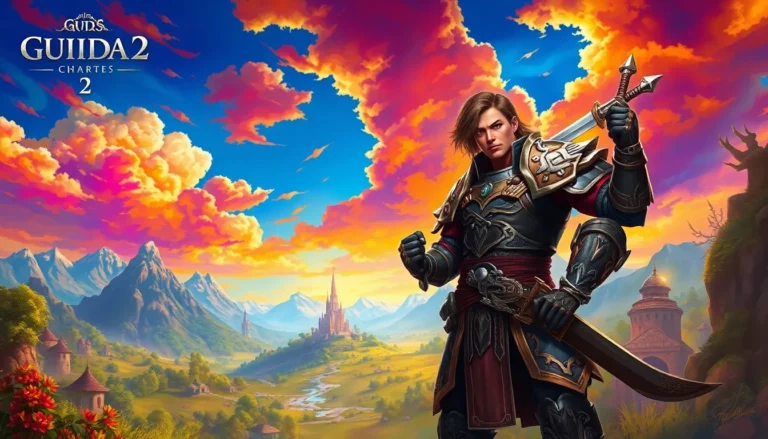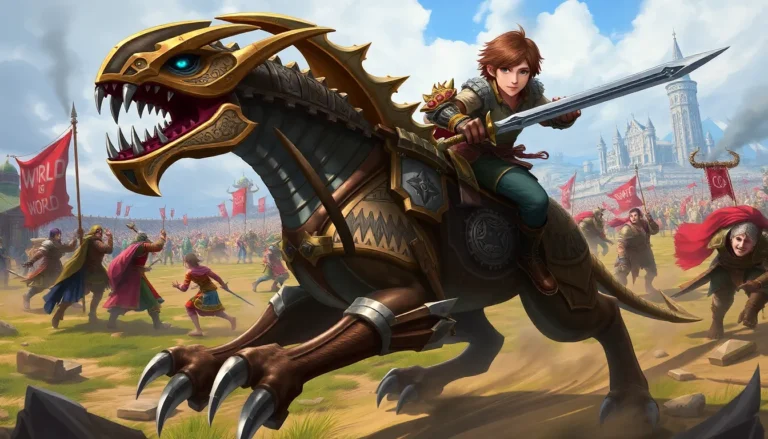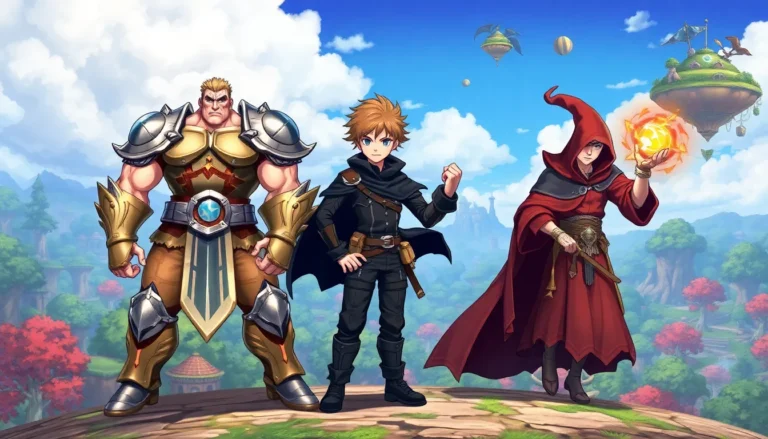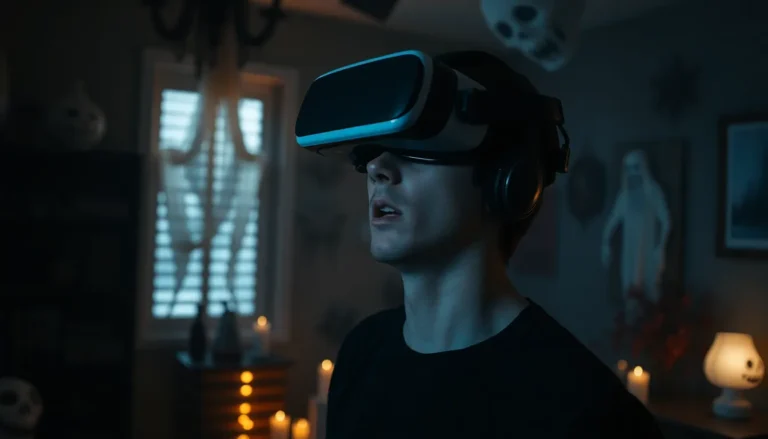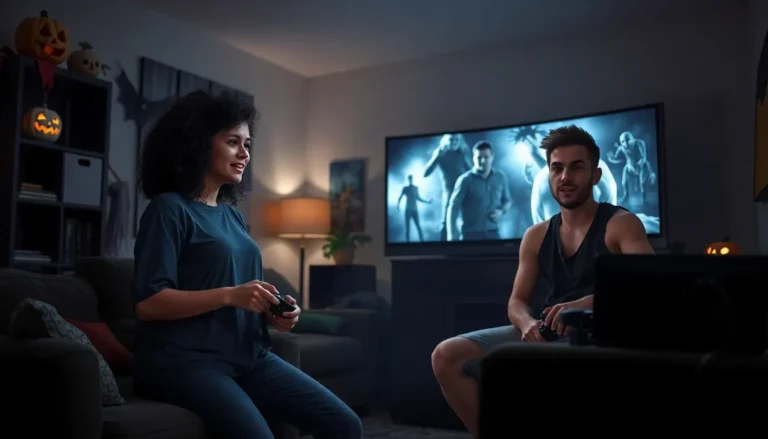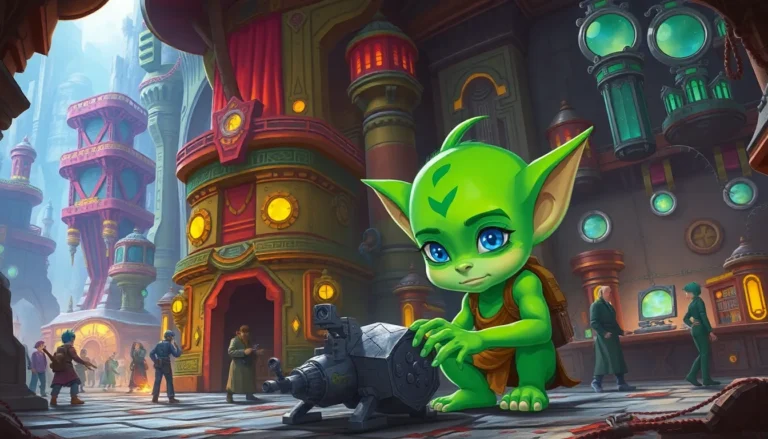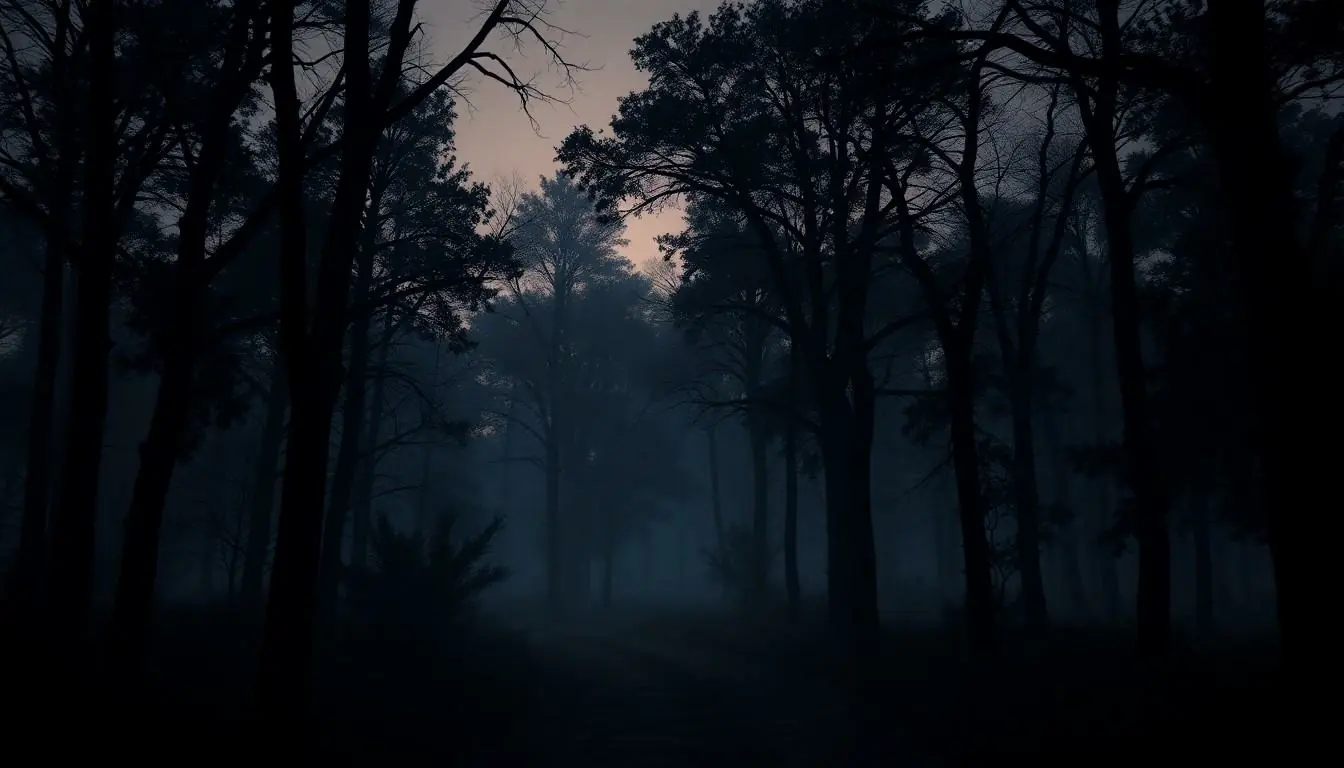Table of Contents
ToggleIn a world where high-definition graphics reign supreme, low poly horror games are the quirky underdogs ready to steal the spotlight. These games prove that you don’t need hyper-realistic visuals to evoke spine-chilling fear. With their charmingly blocky aesthetics and eerie soundscapes, they create a unique blend of nostalgia and terror that keeps players on the edge of their seats.
Imagine navigating a creepy forest or an abandoned asylum, all while dodging pixelated monsters that look like they just stepped out of a 90s video game. It’s like being trapped in a horror movie directed by a playful child with a penchant for the macabre. As players dive into these pixelated nightmares, they discover that sometimes, less really is more—especially when it comes to heart-pounding thrills. Get ready to explore the fascinating world of low poly horror games, where fear meets fun in the most unexpected ways.
Overview of Low Poly Horror Games
Low poly horror games captivate players with their simplistic yet effective art style. Players navigate eerie environments filled with uniquely designed, blocky monsters. This distinctive visual approach creates an atmosphere that intensifies feelings of suspense and dread.
Game developers capitalize on minimalist graphics to evoke nostalgia while still delivering intense horror experiences. Environmental storytelling flourishes within these games, where sound design amplifies tension. The limited visual complexity often enhances imagination, sparking fear of the unknown.
Contrasting hyper-realistic horror, low poly games rely on creative design choices. Shadows play a significant role in creating unease, while subtle animations keep players on edge. These elements intertwine to produce a sense of foreboding that heightens the player experience.
Examples of successful low poly horror games include “Mad Father” and “The Last Door.” Both titles demonstrate how effective storytelling and atmosphere can thrive without high fidelity graphics. Players appreciate the challenge low poly aesthetics present, often leading to immersive gameplay.
Furthermore, the indie game scene has embraced this style, allowing for unique interpretations of horror. Originality blooms in the low poly genre, resulting in diverse narratives and gameplay mechanics. By prioritizing innovation, developers continue to explore new ways to evoke fear and suspense.
Notable Features of Low Poly Horror Games
Low poly horror games combine unique visual styles with engaging gameplay mechanics, creating immersive experiences. Players appreciate the blend of simplicity and terror, which sets these games apart.
Visual Aesthetic
Low poly horror games thrive on their distinct visual aesthetic. Blocky graphics create an iconic charm, allowing developers to focus on atmosphere rather than intricate details. This art style evokes nostalgia, reminding players of earlier gaming eras. Shifting shadows and clever lighting contribute to the overall eeriness, amplifying tension. Minimalistic designs stimulate the player’s imagination, often leading to a more intense fear of the unknown. Iconic examples include “Mad Father” and “The Last Door,” which showcase how limited visuals can effectively convey horror aesthetics.
Gameplay Mechanics
Gameplay mechanics in low poly horror games emphasize exploration and puzzle-solving. These mechanics captivate audiences, rewarding them for engaging with the environment. Simple controls allow for immersive exploration, while inventive puzzles challenge players’ problem-solving skills. Often, sound design plays a crucial role, enhancing immersion and instilling dread at unpredictable moments. Survival elements may also be present, requiring players to manage resources effectively. With a focus on narrative and atmosphere, these games engage players in unique ways, affirming the effectiveness of minimalist design in creating unforgettable gaming experiences.
Popular Low Poly Horror Games
Low poly horror games deliver unique gameplay experiences through engaging stories and distinctive visuals. Here are two popular titles that exemplify the genre.
Game 1: Mad Father Overview
“Mad Father,” developed by Sen, focuses on a young girl named Aya Drevis navigating her eerie home and uncovering dark family secrets. Players explore rooms filled with chilling puzzles and confront sinister spirits. The game’s pixelated graphics and haunting soundtrack enhance its unsettling atmosphere, immersing players in a world of horror. Released in 2012, it has garnered a loyal following for its compelling narrative and immersive gameplay.
Game 2: The Last Door Overview
“The Last Door,” created by The Game Kitchen, features an atmospheric journey through Victorian England. Players guide protagonist Jeremiah Devitt as he uncovers disturbing events surrounding an old friend. The game’s minimalist art style emphasizes storytelling and instills dread through its chilling sound design. Launched in episodes beginning in 2013, “The Last Door” offers a gripping narrative filled with psychological horror elements, captivating both fans of the genre and newcomers alike.
The Appeal of Low Poly Horror Aesthetics
Low poly horror games captivate players with their unique charm. Blocky graphics evoke nostalgia while delivering intense horror experiences. Environments filled with pixelated monsters create an eerie yet engaging atmosphere, enhancing feelings of suspense and dread. Developers utilize minimalistic art to spark imagination, leaving much to the player’s interpretation.
Environmental storytelling plays a crucial role in these games. Sound design amplifies tension, instilling dread at unexpected moments. Shadows, shifting light, and subtle animations contribute to a foreboding environment. Unlike their hyper-realistic counterparts, low poly games focus on atmosphere over intricate details, allowing creativity to shine.
Successful titles like “Mad Father” and “The Last Door” exemplify the effectiveness of this approach. The narrative in “Mad Father” follows Aya Drevis as she uncovers secrets within her home, accompanied by chilling puzzles and a haunting soundtrack. Players traverse Victorian England in “The Last Door,” guiding Jeremiah Devitt through psychological horrors tied to disturbing past events. Each game proves that powerful storytelling can thrive without high-fidelity graphics.
Features distinguish low poly horror games, primarily their engaging gameplay mechanics. Exploration and puzzle-solving take center stage, rewarding players for interacting with their surroundings. A distinct visual style encourages immersion, while clever design choices enhance the overall experience. The indie game scene embraces this aesthetic, fostering originality and fresh narratives that resonate with enthusiasts.
Ultimately, the appeal lies in simplicity. Low poly horror games demonstrate that fear and enjoyment can coexist through minimalistic design, captivating players and leaving lasting impressions.
Conclusion
Low poly horror games stand out in the gaming landscape by marrying simplicity with spine-chilling experiences. Their unique art style and atmospheric soundscapes create a distinctive blend of nostalgia and terror that resonates with players. By focusing on storytelling and immersive gameplay, these games invite players to engage their imaginations and confront their fears.
As the indie game scene continues to thrive, developers are likely to push the boundaries of this genre even further. With every pixelated monster lurking in the shadows, low poly horror games remind players that sometimes less truly is more. The intersection of creativity and fear ensures these games will maintain their appeal for years to come.

